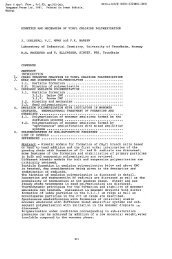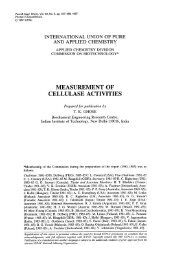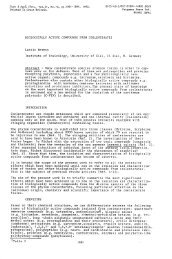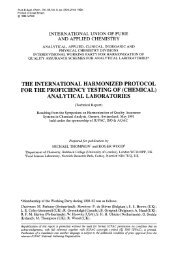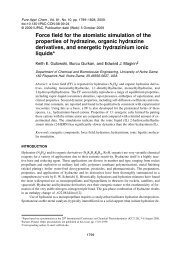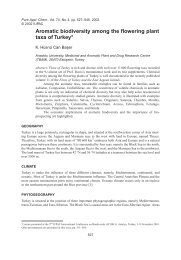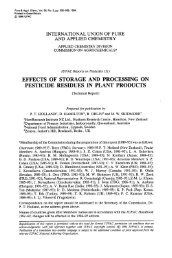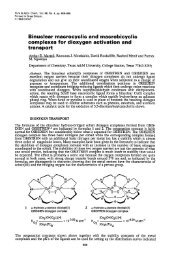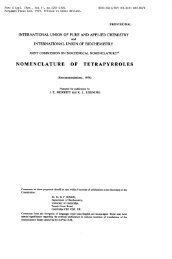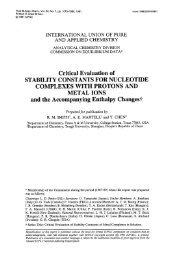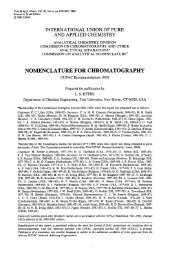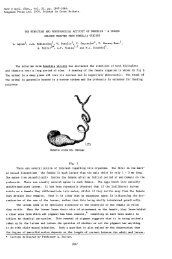Protolytic equilibrium in lyophilic nanosized dispersions ... - IUPAC
Protolytic equilibrium in lyophilic nanosized dispersions ... - IUPAC
Protolytic equilibrium in lyophilic nanosized dispersions ... - IUPAC
Create successful ePaper yourself
Turn your PDF publications into a flip-book with our unique Google optimized e-Paper software.
<strong>Protolytic</strong> <strong>equilibrium</strong> <strong>in</strong> <strong>lyophilic</strong> <strong>dispersions</strong> 1495<br />
(38)<br />
Indeed, such constants can be used if the precise value of the pseudophase volume is unknown.<br />
But if it is available, and the concentration activity coefficient of the i species <strong>in</strong> the aqueous phase, f w<br />
i ,<br />
can be estimated, the Kb,i values can be converted <strong>in</strong>to Pi Pi = Kb,i (csurf – cmc)Vw (Vm f w<br />
i ) –1 = Kb,i s/f w<br />
i (39)<br />
Here, Vw and Vm are volumes of the bulk and micellar phases, respectively [1m]. A vast number of Kb,i and Pi values are accumulated <strong>in</strong> the literature for various substances, from noble gases to dyes and<br />
metal complexes [4c,6,71e–g,73a,74b,118a,b,d,130]. The Kb,i values can be used as criteria of hydrophobicity<br />
of compounds; correlations are known between logarithms of water–micelle and water–octanol-1<br />
partition coefficients [73a,131].<br />
To estimate the degree of b<strong>in</strong>d<strong>in</strong>g of various molecules and ions by surfactant micelles, a number<br />
of methods are developed, for example, spectroscopic, chromatographic, diffusion ones, etc. For<br />
acid–base reactions, the analysis of the pK a<br />
a plots vs. surfactant concentration <strong>in</strong> the region above cmc<br />
[1a,f,1l,72a,b,73] is most helpful and universal, because the alteration of electronic absorption spectra<br />
along with b<strong>in</strong>d<strong>in</strong>g is sometimes not dist<strong>in</strong>ct enough.<br />
The relation between the pK a<br />
a value of the acid (HBz →<br />
← Bz–1 + H + ) <strong>in</strong> micellar solutions at fixed<br />
ionic strength and the <strong>in</strong>dices of ionization constant <strong>in</strong> water, pKw* a , determ<strong>in</strong>ed at the same ionic<br />
strength, is as follows:<br />
pK a<br />
a = pKa w* + log{[1 + Kb,HB (csurf – cmc)][1 + Kb,B (csurf – cmc)] –1 } (40)<br />
Evidently, if the b<strong>in</strong>d<strong>in</strong>g constants of the HBz and Bz–1 species, Kb,HB and Kb,B , are large enough,<br />
the pK a<br />
a completely co<strong>in</strong>cides with pK ac<br />
a . On the contrary, if both b<strong>in</strong>d<strong>in</strong>g constants are so small that<br />
Kb,i (csurf – cmc)



